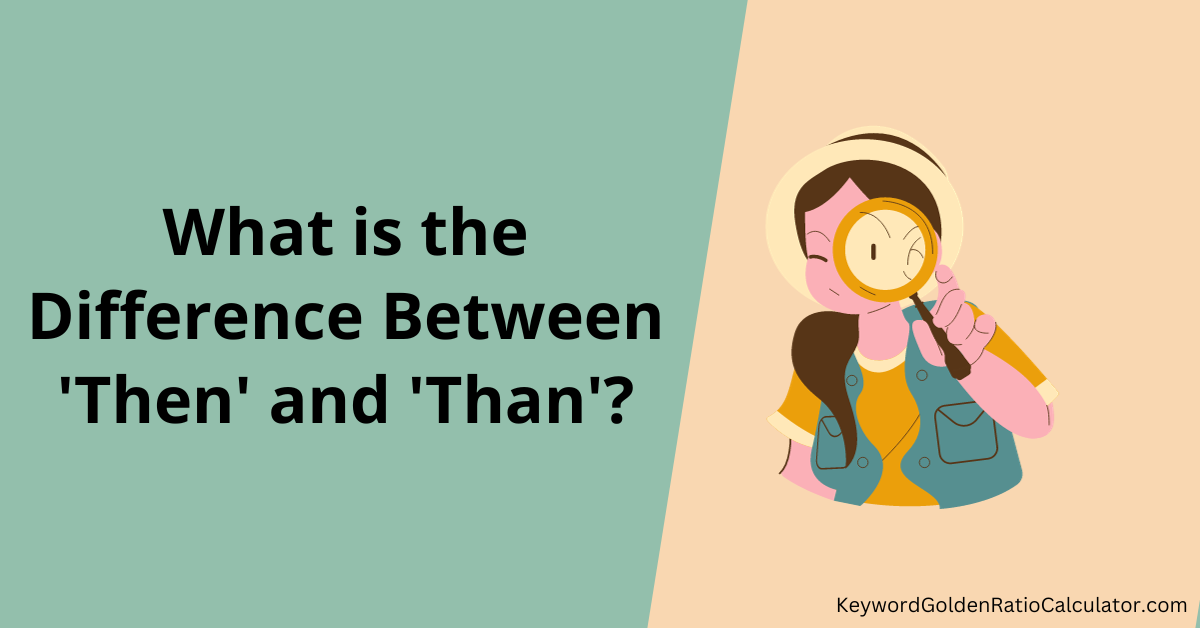Don’t we all wish English could be as straightforward as Mathematics?
One plus one equals two, right? Well, when it comes to the English language, things aren’t always so black and white.
Certain words seem to trip us up, like “then” and “than.”
They may look and sound similar, but misuse could lead your sentences in directions you never intended. No need to worry, however.
This post is here to take you through the semantics of these two troublesome words.
Breaking Down the Basics: Definitions
Let’s start by breaking down the basics. What do “then” and “than” actually mean?
“Then”
“Then” is usually used in the context of time. It refers to a moment following another moment, or consequently.
- It can show condition, consequence, or time.
Examples of “Then”:
- Condition: If you study hard, then you’ll pass your exams.
- Consequence: She was late, then she missed the bus.
- Time: We went to the beach, and then we went home.
“Than”
On the other hand, “than” is used to make comparisons or show preference.
Examples of “Than”:
- Comparison: He is taller than I am.
Preference: I would rather go to the beach than work on a sunny day.
Getting It Right: License to Compare and Sequence
Our English journey doesn’t stop at definitions. Knowing the meaning is one thing, but understanding their usage within the context of a sentence is another.
Use “Then” When Dealing with Sequence or Time
When expressing an event or condition immediately or soon after another, use “then”. It helps to signify the sequence of events or the passage of time.
Examples:
- She put her coat on, then she went outdoors.
- I will finish writing this blog post, then I’ll go for lunch.
Use “Than” When Making Comparisons
“Than” is the word of choice when comparing two or more things.
Examples:
- Apples are sweeter than oranges.
She is more proficient in English than her brother.
Common Errors and How to Avoid Them
Despite the stark differences in meanings, people still mix them up. How does this happen, and what can we do about it? Let’s explore some common errors and strategies to avoid them.
People often confuse “then” and “than” while writing quickly or speaking in casual settings.
Examples of Wrong Uses:
- Wrong: I’d rather go swimming then do my homework.
- Instead: I’d rather go swimming than do my homework.
- Wrong: We planted the seeds, than we watered them.
- Instead: We planted the seeds, then we watered them.
Strategies for Avoiding Mistakes:
- Remember the function: “Than” is for comparisons and “Then” is for time or sequence.
Use the Alphabet: “Then” and “Time” both contain “e”, while “Than” and “Comparison” both contain “a”.
Final Thoughts: A World of Difference in One Letter
We hope that through this post, you have gained a better understanding of the roles “then” and “than” play in English writing and speech.
While they may just differ by one letter, the implications they present within sentences are worlds apart.
Keeping this in mind makes communication clearer, making sure we say what we mean.
So, the next time you gear up for writing or a conversation, remember: “then” for time and sequence, “than” for comparisons.
Remember, it’s smaller nuances like these that make languages fascinating! So, keep exploring, keep learning. What’s the next linguistic twist you’re going to untangle?
“The limits of my language mean the limits of my world.” – Ludwig Wittgenstein

